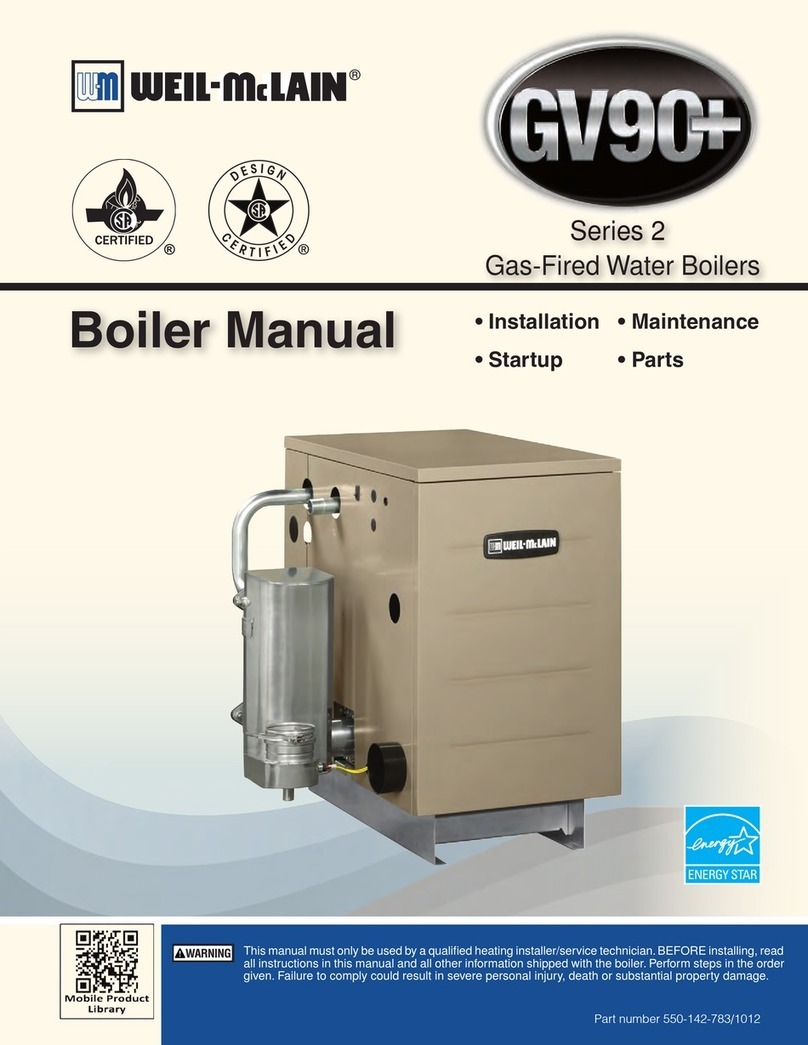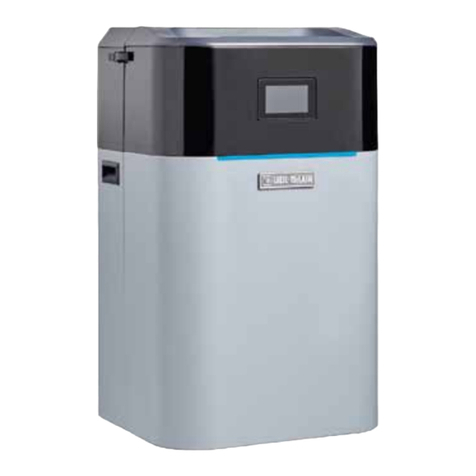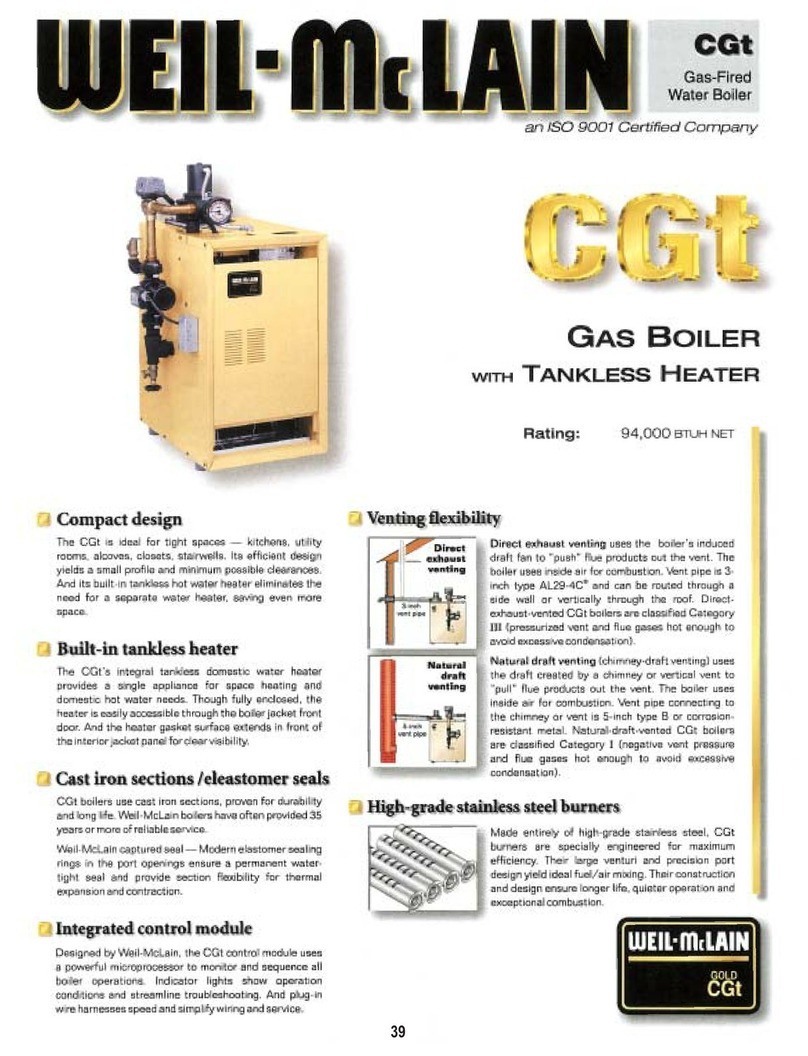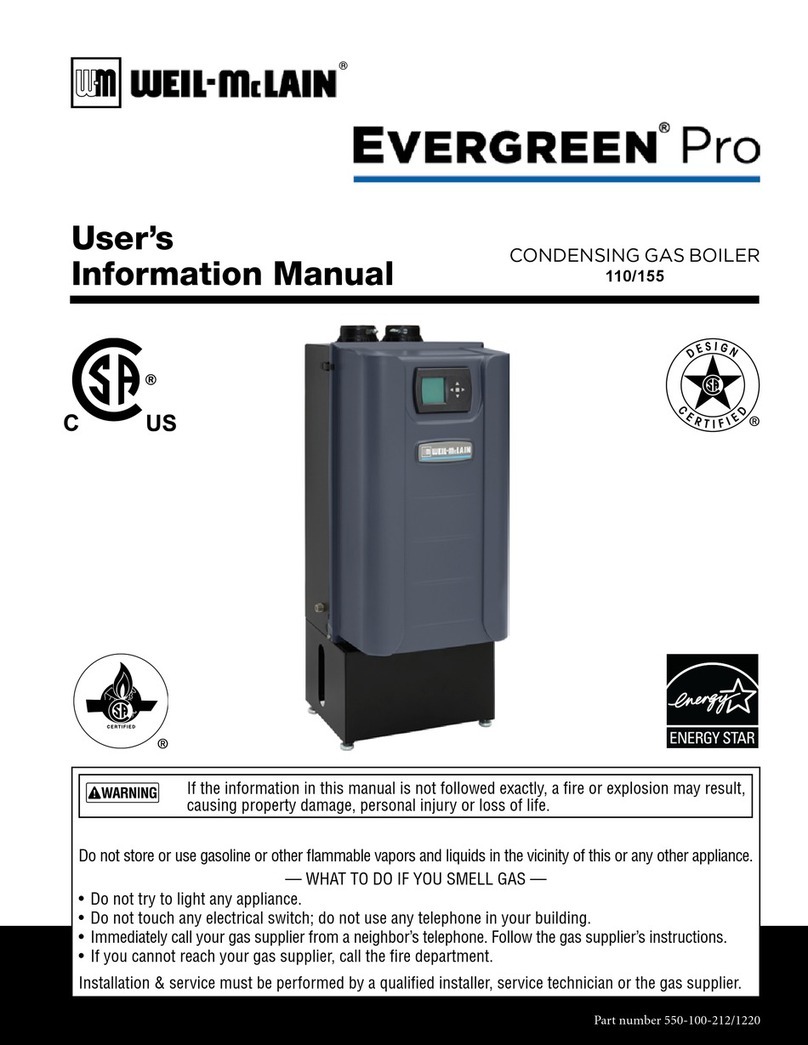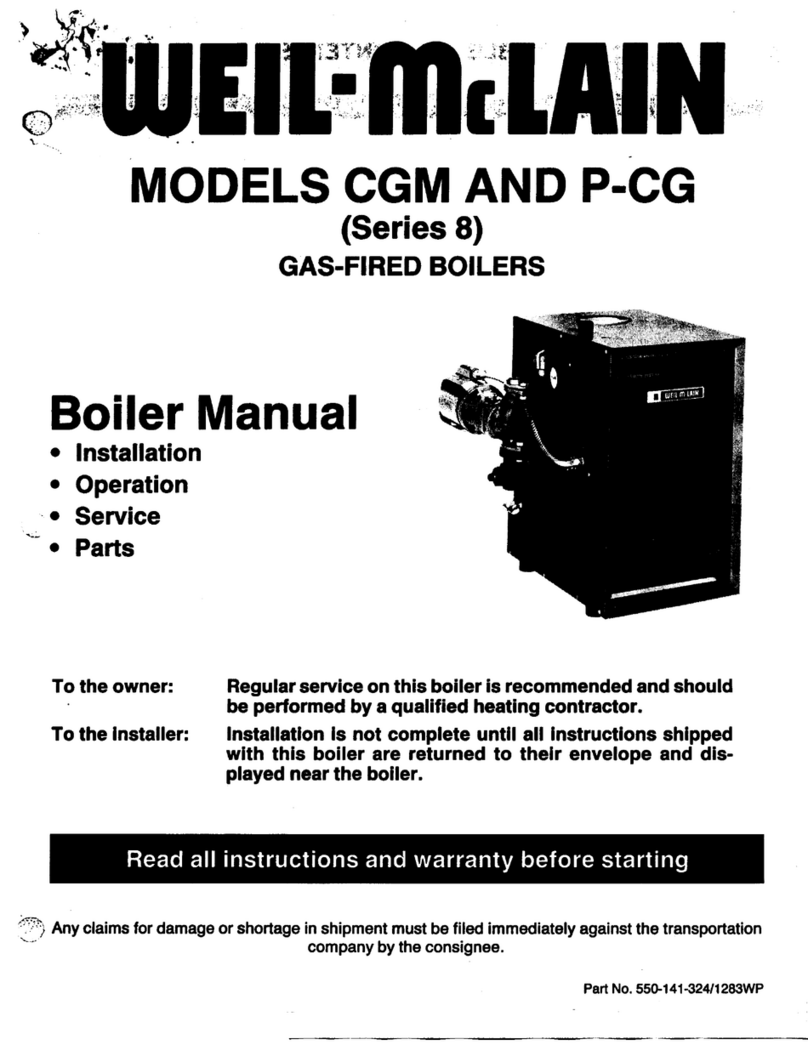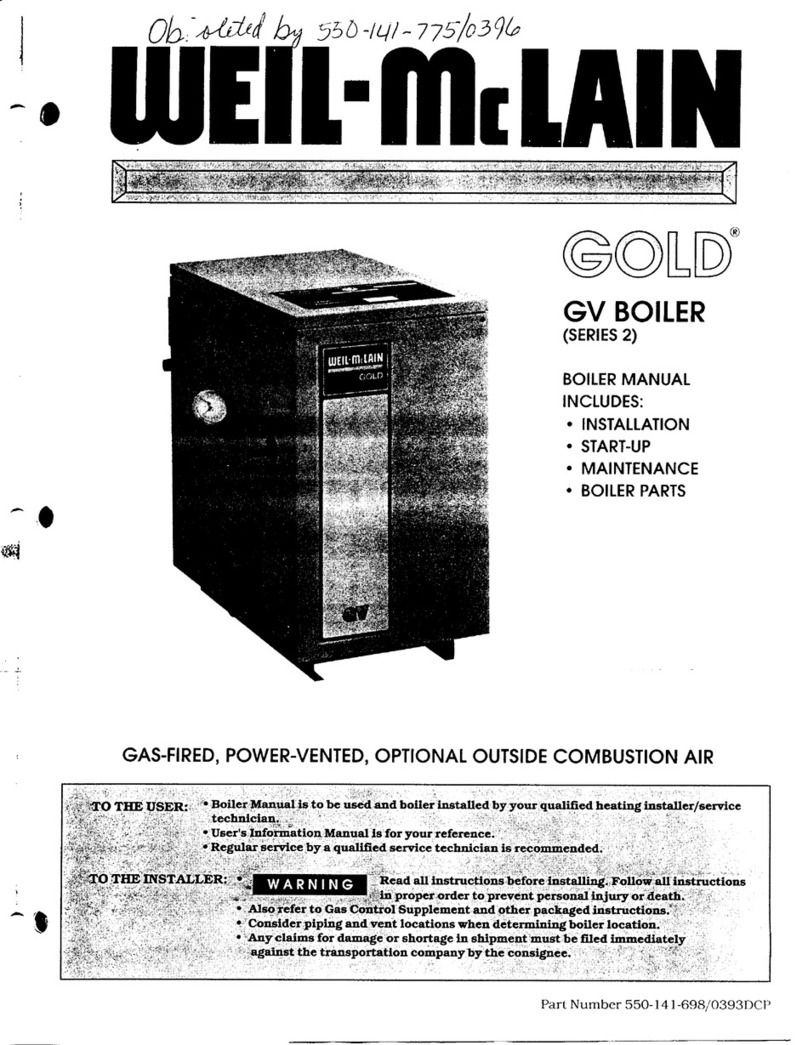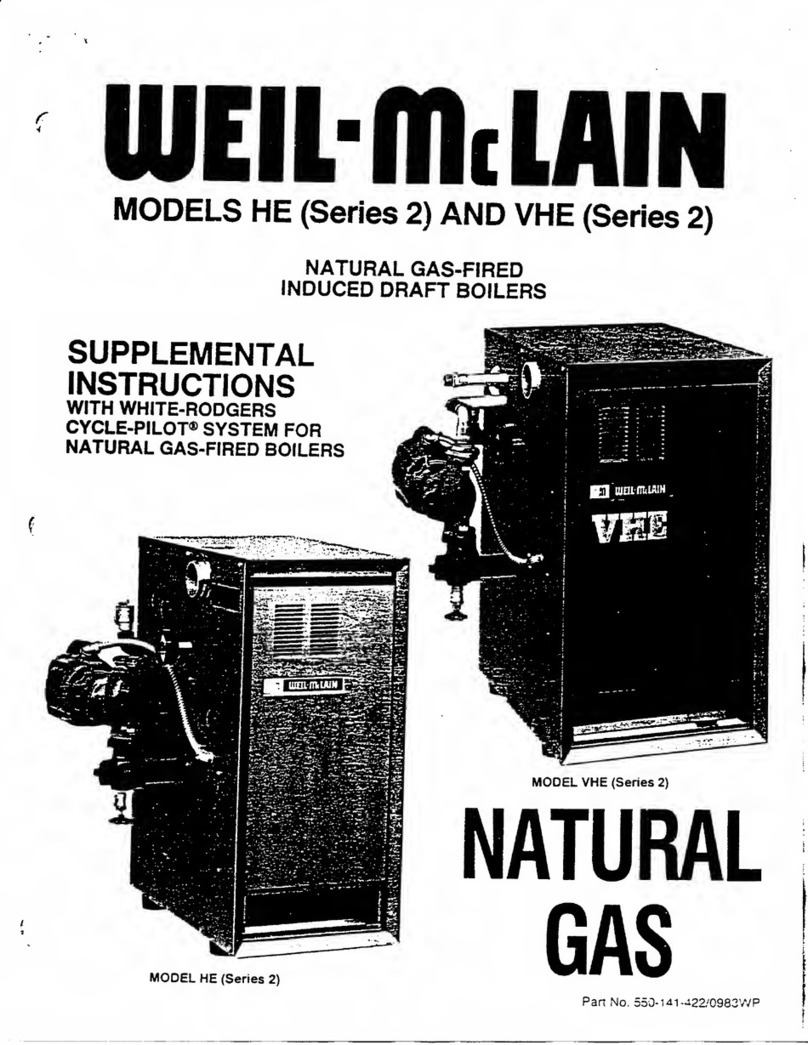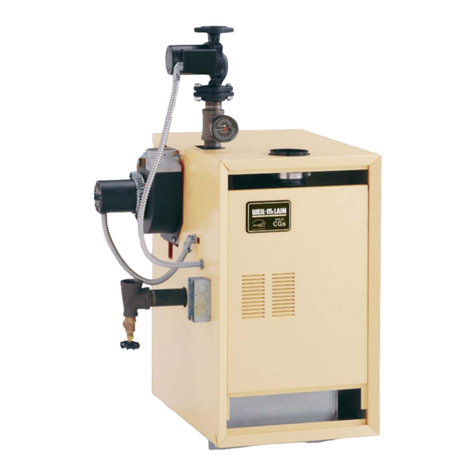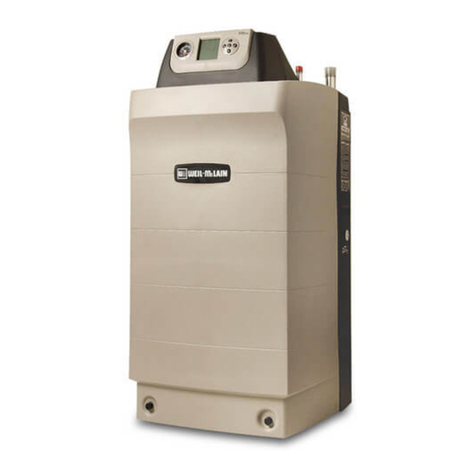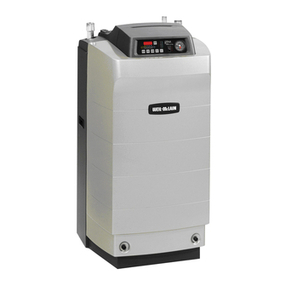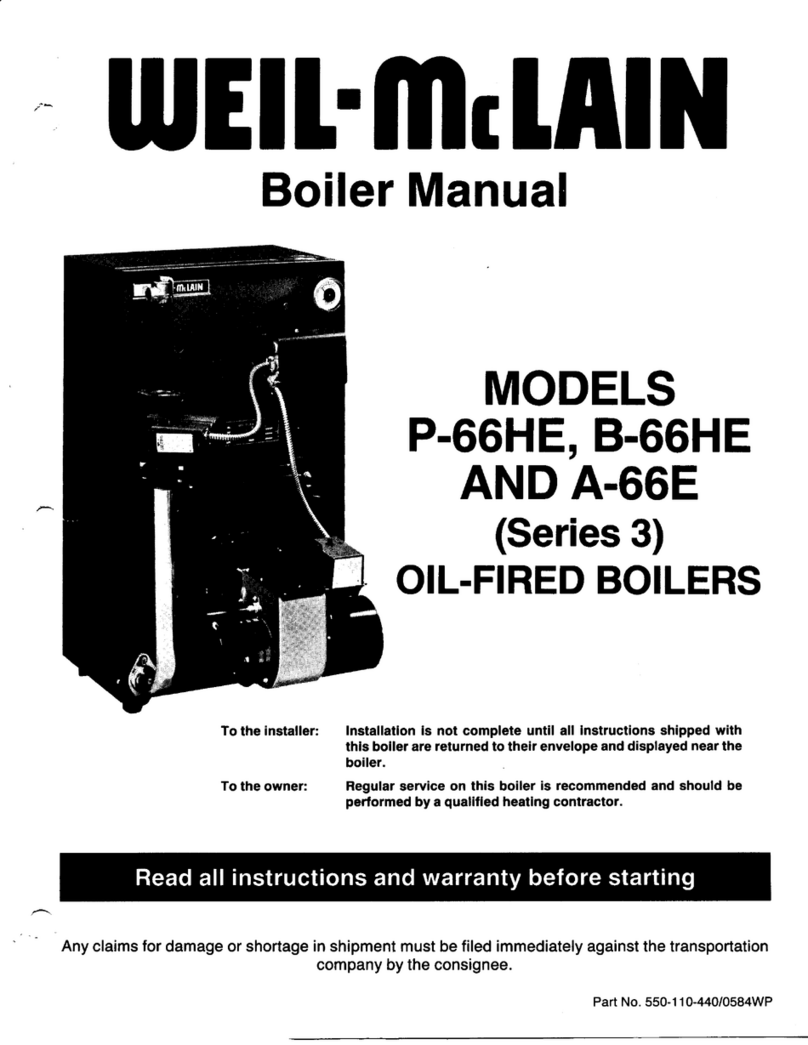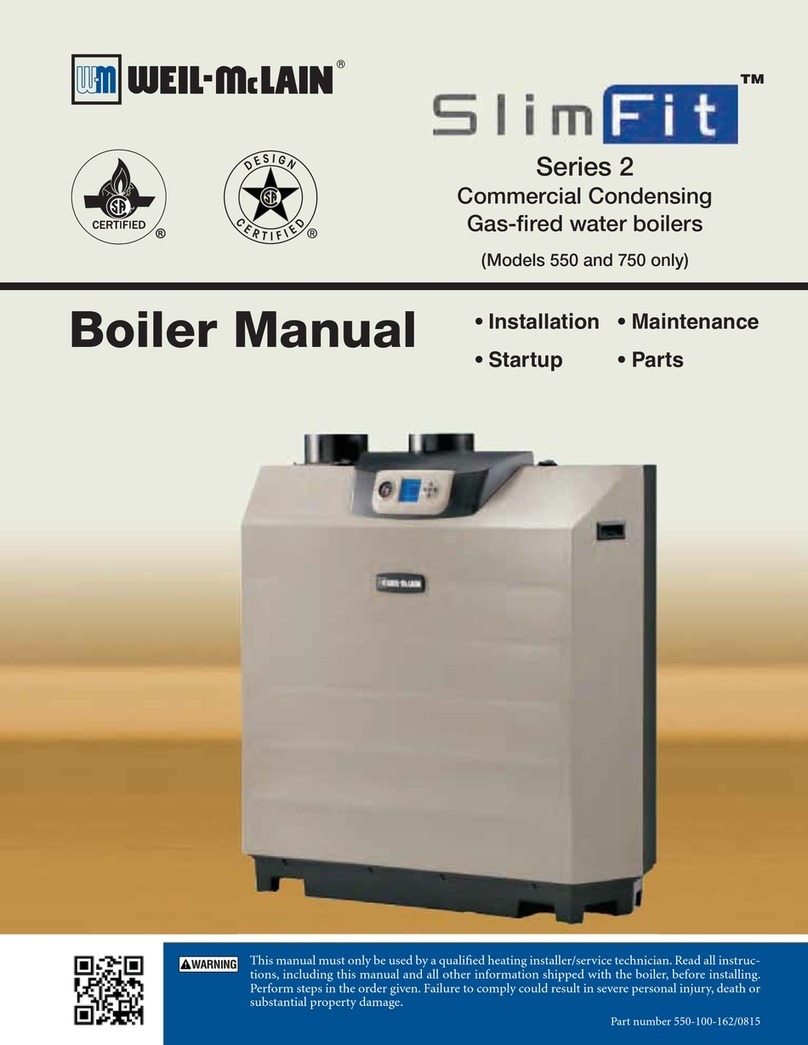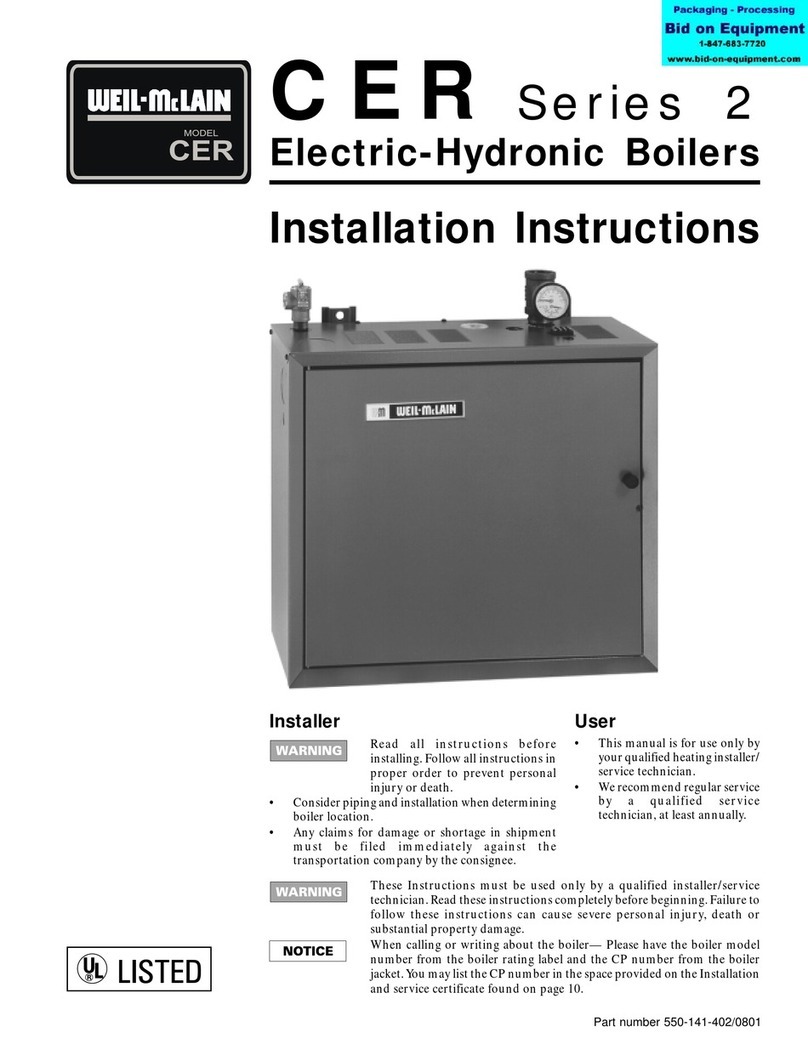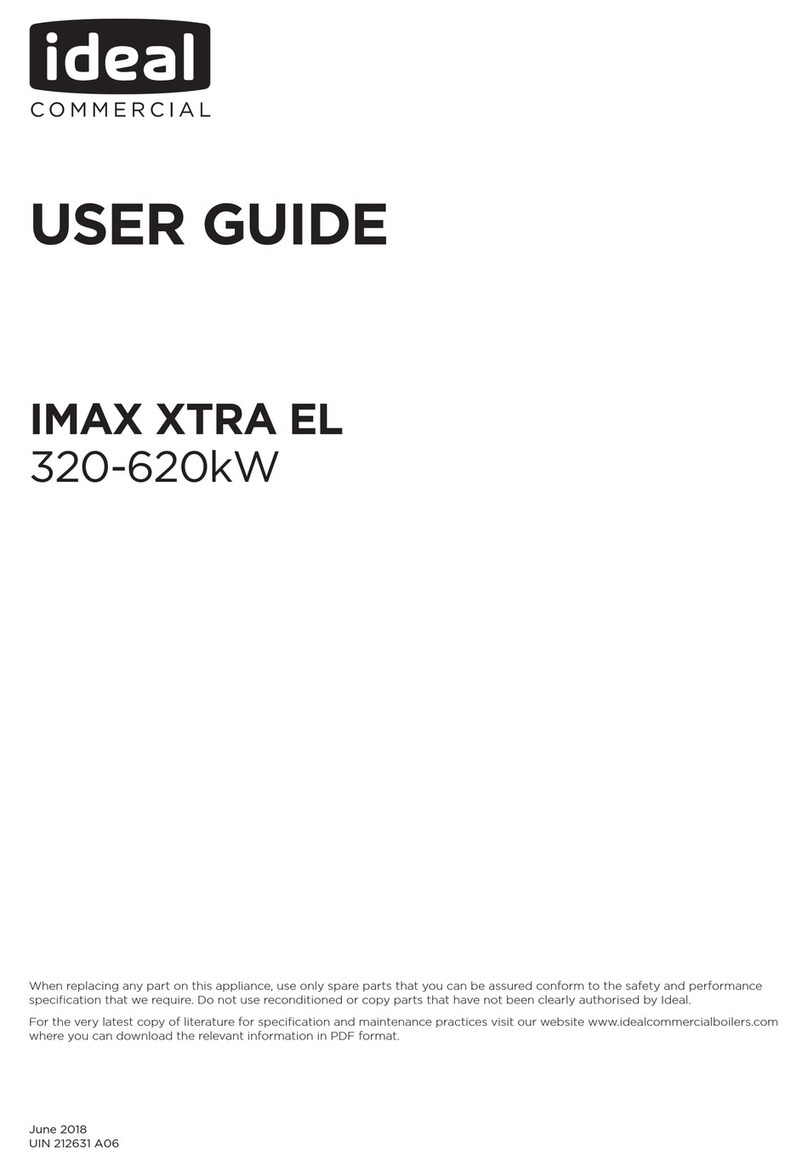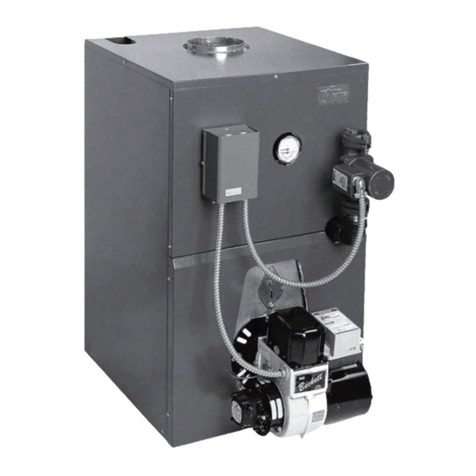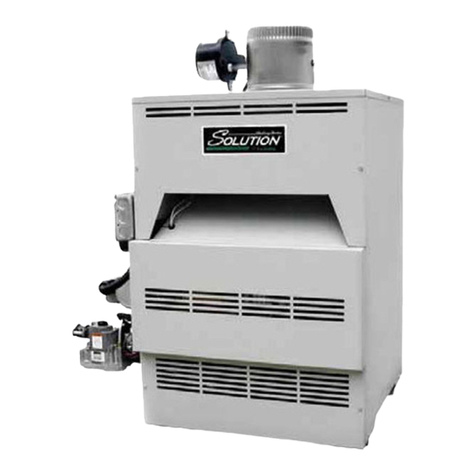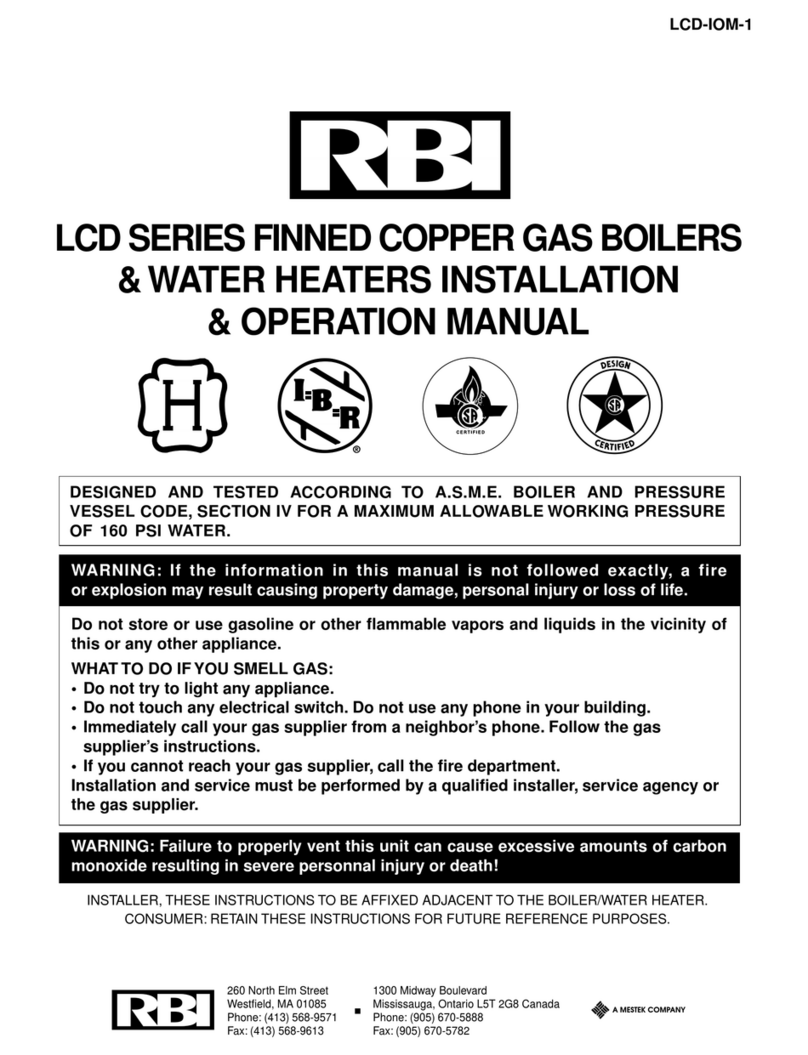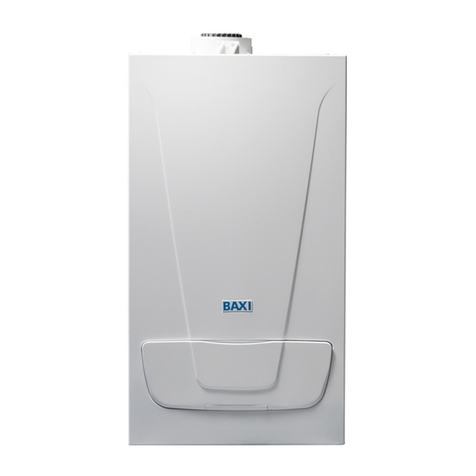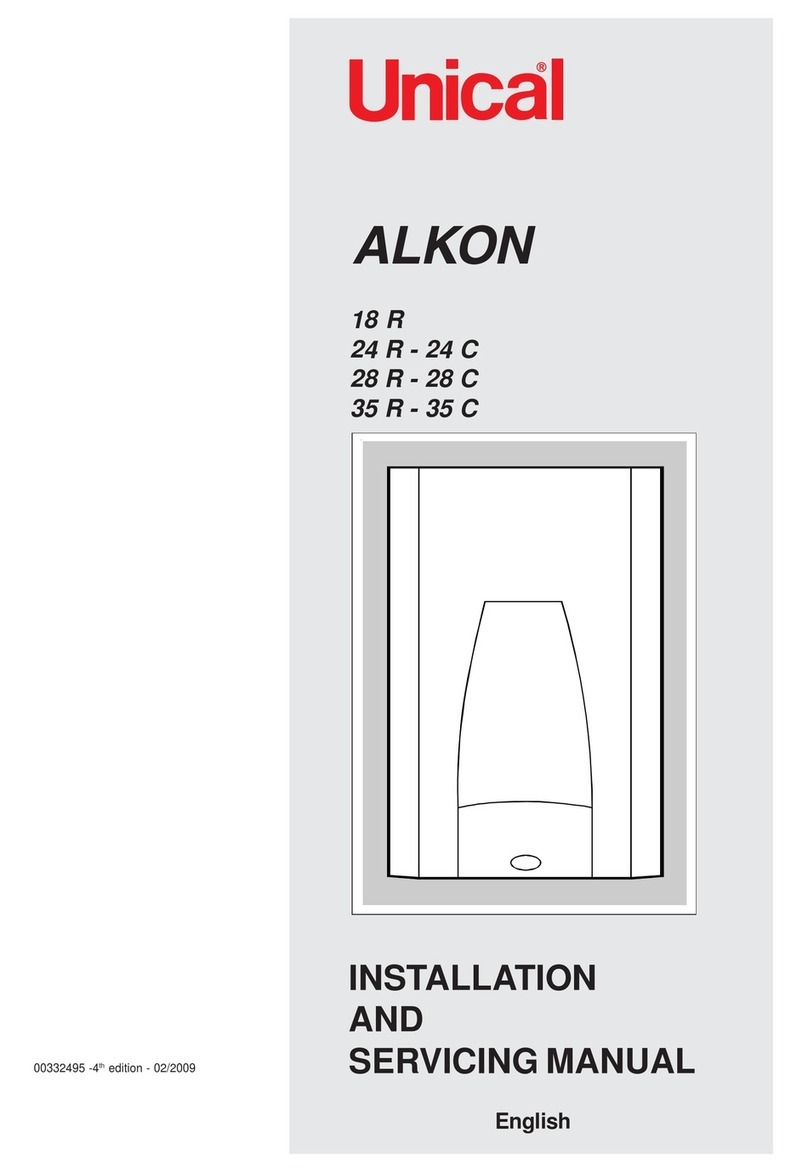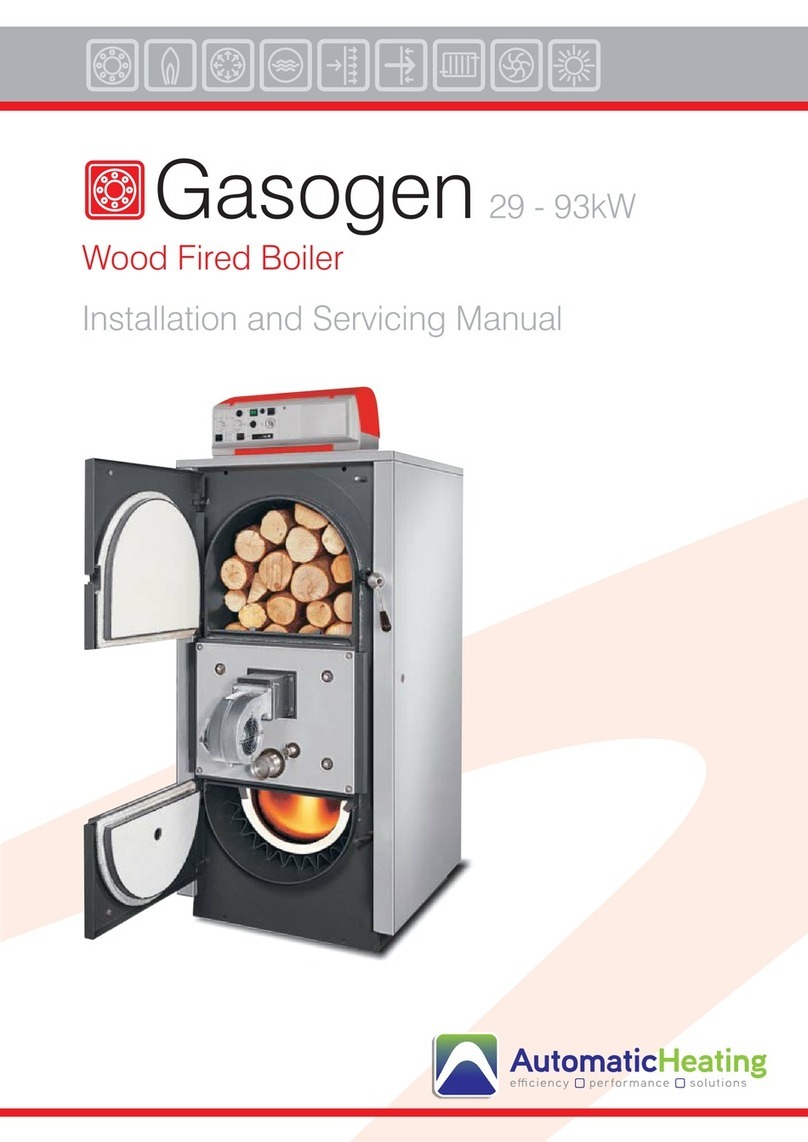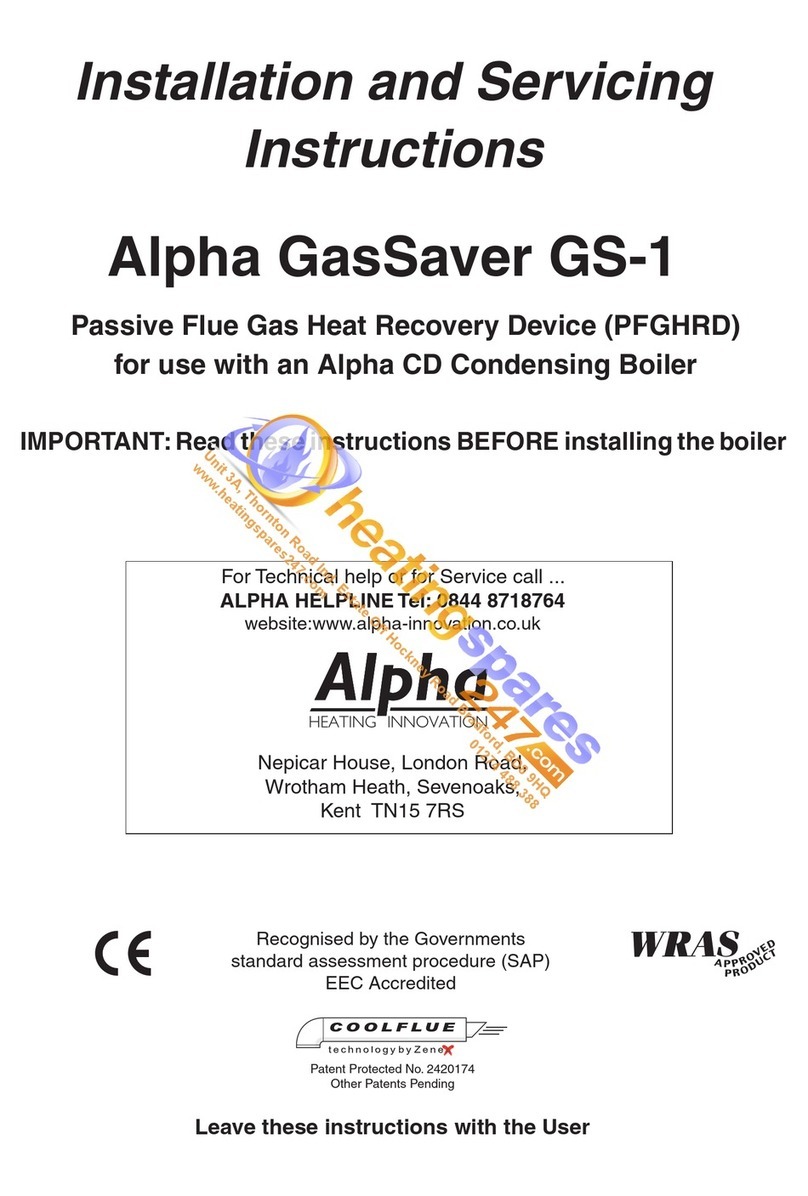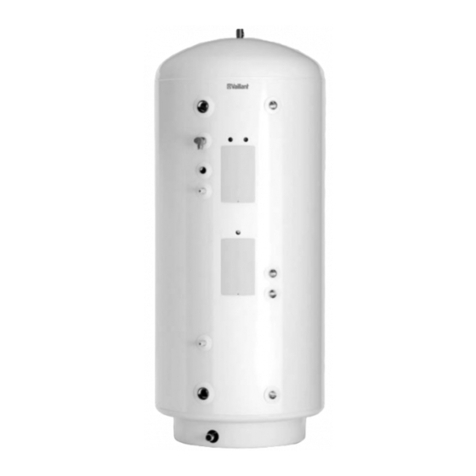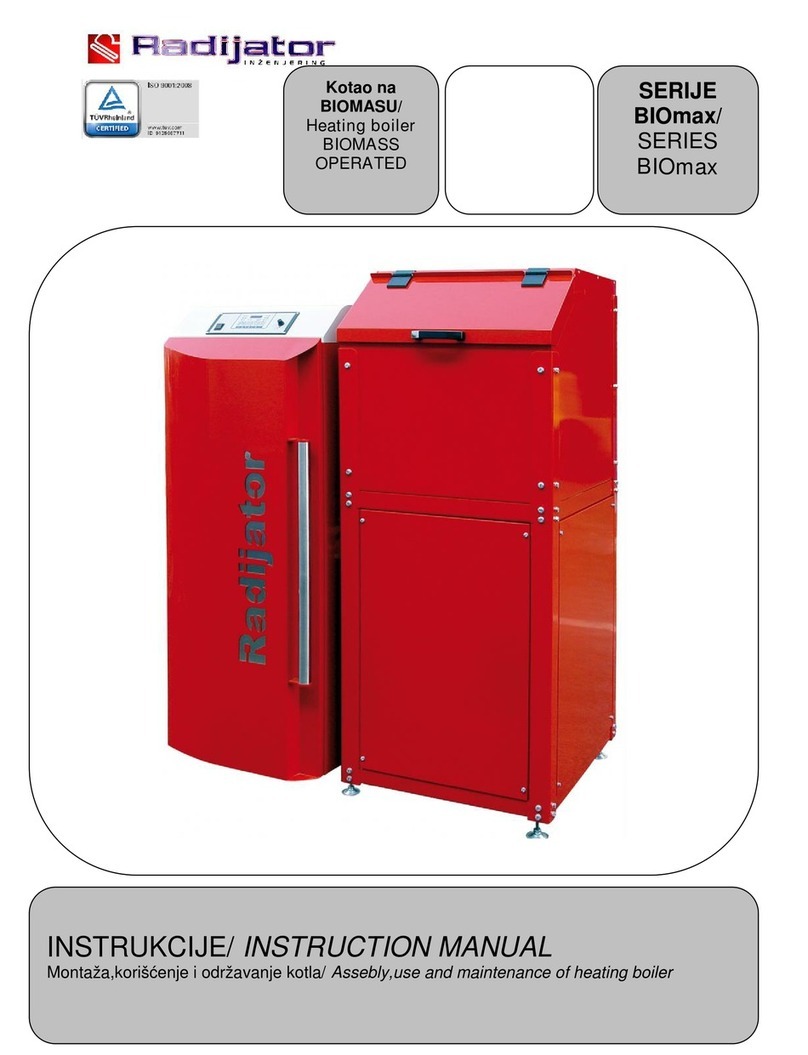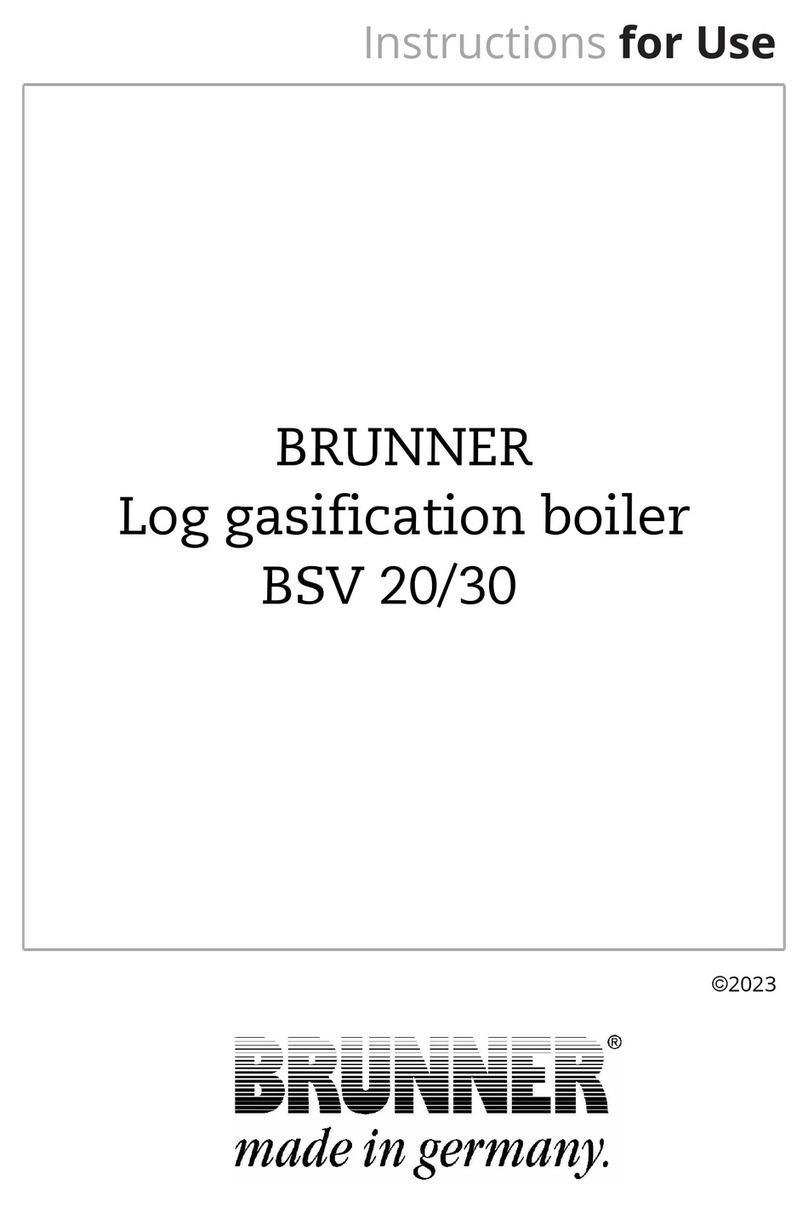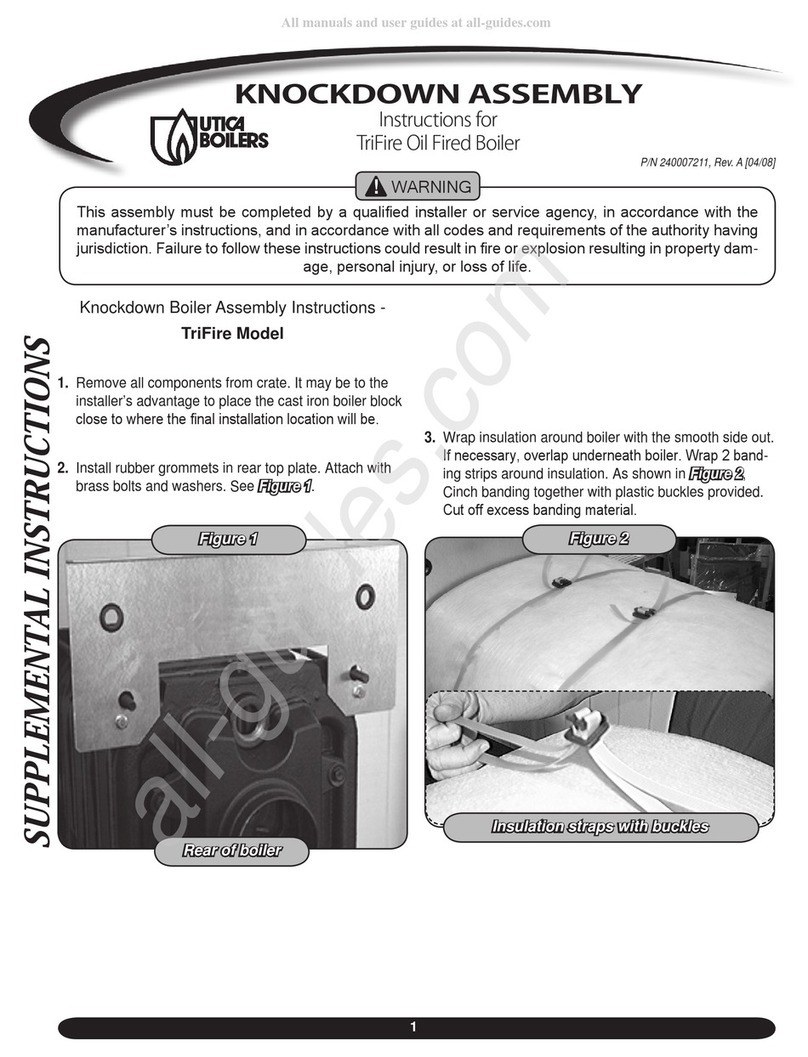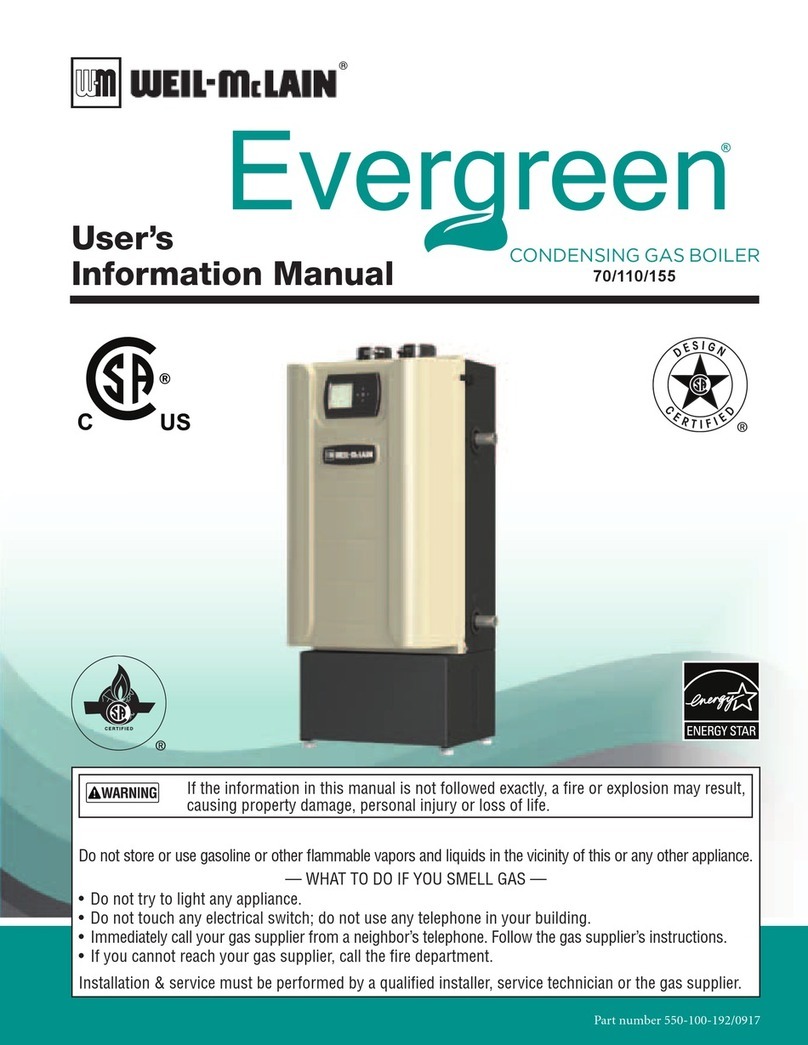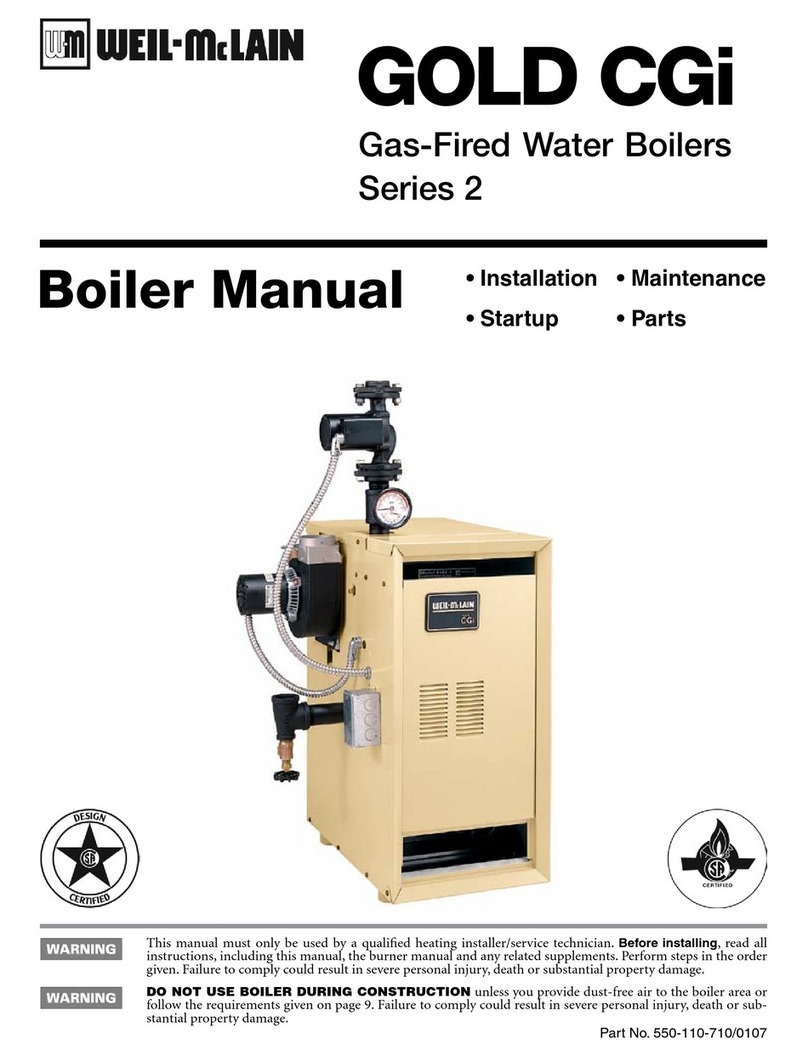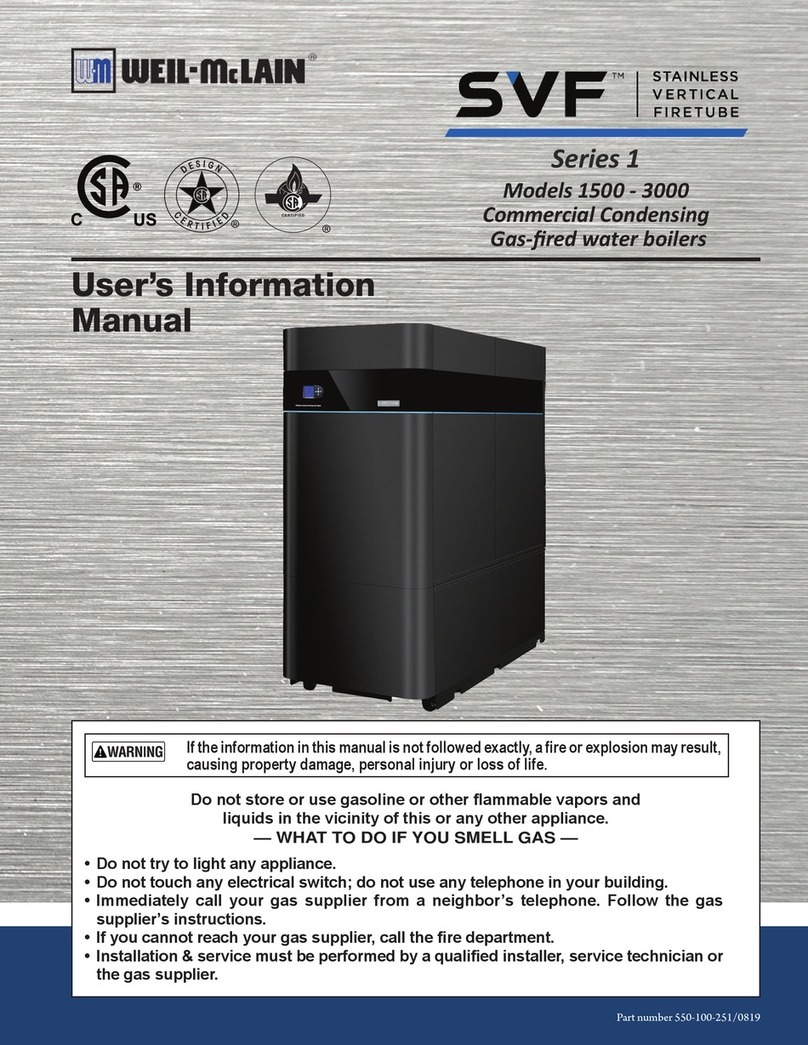
Part number 550-100-103/1110
GAS-FIRED WATER BOILER — Manual addendum — Venting
A–2
Corrosive contaminants and sourcesFigure 1
Products to avoid
Spray cans containing chloro/fluorocarbons
Permanent wave solutions
Chlorinated waxes/cleaners
Chlorine-based swimming pool chemicals
Calcium chloride used for thawing
Sodium chloride used for water softening
Refrigerant leaks
Paint or varnish removers
Hydrochloric acid/muriatic acid
Cements and glues
Antistatic fabric softeners used in clothes dryers
Chlorine-type bleaches, detergents, and cleaning
solvents found in household laundry rooms
Adhesives used to fasten building products and other
similar products
Excessive dust and dirt
Areas likely to have contaminants
Dry cleaning/laundry areas and establishments
Swimming pools
Metal fabrication plants
Beauty shops
Refrigeration repair shops
Photo processing plants
Auto body shops
Plastic manufacturing plants
Furniture refinishing areas and establishments
New building construction
Remodeling areas
Garages with workshops
Venting & air — general
Do not install the Ultra boiler into a common vent with
any other appliance. This will cause flue gas spillage or ap-
pliance malfunction, resulting in possible severe personal
injury, death or substantial property damage.
Existing common vent systems may be too large for the
appliances remaining connected after the existing boiler
is removed.
Failure to follow all instructions can result in flue gas
spillage and carbon monoxide emissions, causing severe
personal injury or death.
When removing a boiler from an existing
common vent system
The Ultra boiler cannot be common vented with any other appli-
ance. When an existing boiler is replaced with an Ultra boiler, the Ultra
boiler CANNOT use the existing common vent. The Ultra boiler requires
its own vent and air piping, as specified in this manual. This may cause a
problem for the appliances that remain on the old common vent, because
the vent may be too large. The following test is intended to check for proper
operation of the appliances remaining on the old common vent system.
Vent system verification
At the time of removal of an existing boiler, the following steps shall be
followed with each appliance remaining connected to the common venting
system placed in operation, while the other appliances remaining connected
to the common venting system are not in operation. Seal any unused open-
ings in the common venting system.
Existing vent test procedure
(The following is intended to test whether the appliances
remaining on an existing vent system will operate
satisfactorily.)
Visually inspect the venting system for proper size and horizontal pitch1.
and determine there is no blockage or restriction, leakage, corrosion or
other deficiencies which could cause an unsafe condition.
Test vent system — Insofar as is practical, close all building doors and2.
windows and all doors between the space in which the appliances
remaining connected to the common venting system are located and
other spaces of the building. Turn on clothes dryers and any appliance
not connected to the common venting system. Turn on any exhaust
fans, such as range hoods and bathroom exhausts, so they will oper-
ate at maximum speed. Do not operate a summer exhaust fan. Close
fireplace dampers.
Place in operation the appliance being inspected.Follow the lighting in-3.
structions. Adjust thermostat so appliance will operate continuously.
Test for spillage at draft hood relief opening after 5 minutes of main4.
burner operation. Use the flame of a match or candle, or smoke from
a cigarette, cigar, or pipe.
After it has been determined that each appliance remaining connected5.
to the common venting system properly vents when tested as outlined
herein, return doors, windows, exhaust fans, fireplace dampers, and any
other gas-burning appliance to their previous conditions of use.
Any improper operation of common venting system should be corrected
so the installation conforms with the National Fuel Gas Code,ANSI Z223.1
— latest edition. Correct by re-sizing to approach the minimum size as
determined using the appropriate tables in Part 11 of that code. Canadian
installations must comply with B149.1 or B149.2 Installation Code.
REPLACES MANUAL PAGE 16
You must provide combustion air.
Direct vent — Install air inlet piping for the Ultra
boiler as described in the Boiler manual and this ad-
dendum. The air termination fitting must be installed
with the clearances and geometry relative to the vent
outlet depicted in this manual to ensure that flue
products do not enter the air intake.
Direct exhaust — Provide combustion air openings
to boiler room/building as specified in this adden-
dum and as required by all applicable codes.
Ensure that the combustion air will not contain
any of the contaminants in Figure 1. DO NOT
place combustion air supply opening or intake near
a swimming pool, for example. Avoid areas subject
to exhaust fumes from laundry facilities. These areas
will always contain contaminants.
Contaminated combustion air will damage the boiler,
resulting in possible severe personal injury, death or
substantial property damage.
